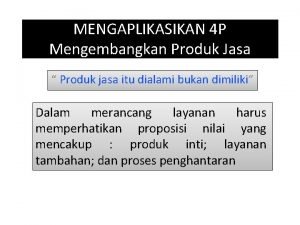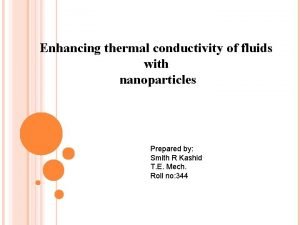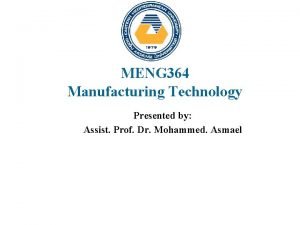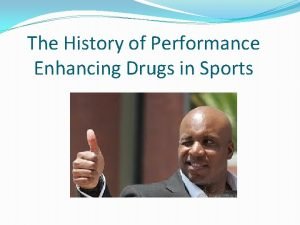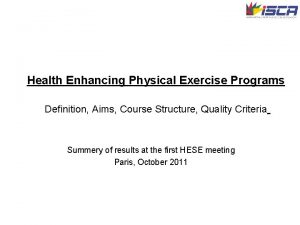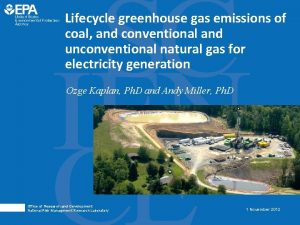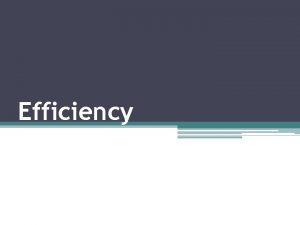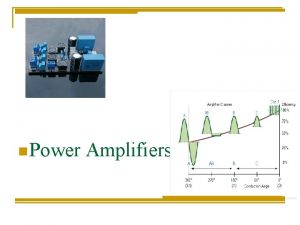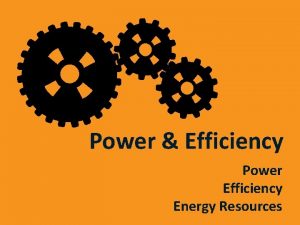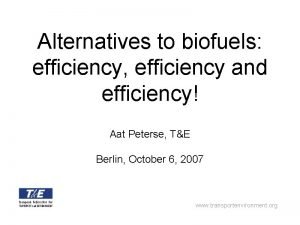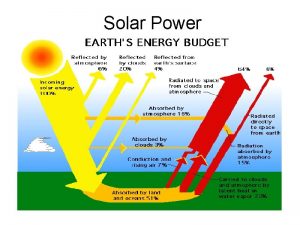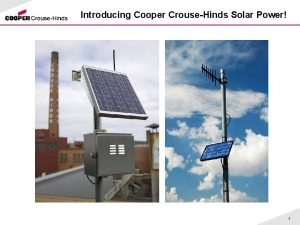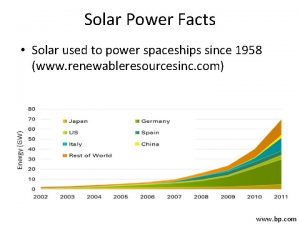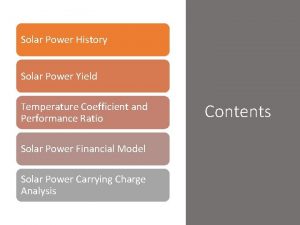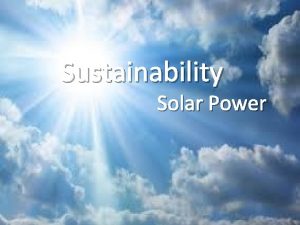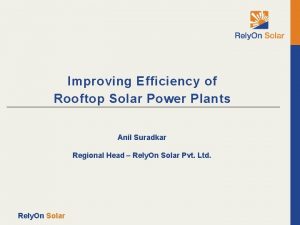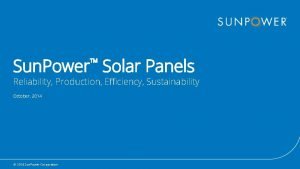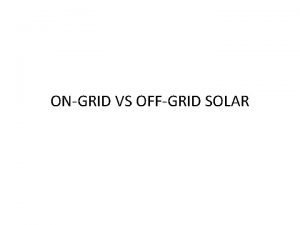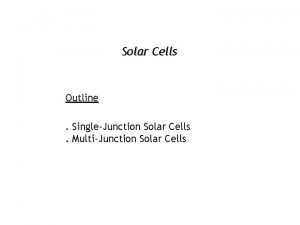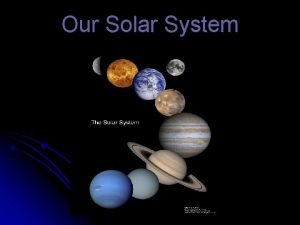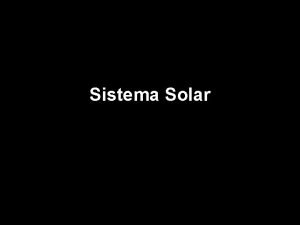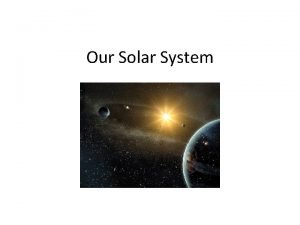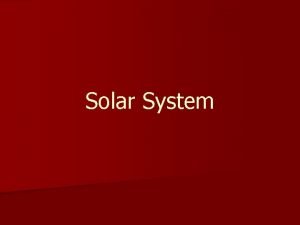Surfaceplasmons in solar power Enhancing Efficiency of Solar
























- Slides: 24

Surfaceplasmons in solar power Enhancing Efficiency of Solar Cells and Solar Thermal Collectors with surface Plasmon Resonances in Metal Nanoparticles Antti Pennanen, Jouko Korppi-Tommola & Jussi Toppari 8. 6. 2009 NSC Nanoscience Center UNIVERSITY OF JYVÄSKYLÄ OSKE Beneq Lamit. fi

Introduction Properties of Silicon • Abundant • Cheap • Stable • Non-toxic • Well-established industry Most used photovoltaic material [Pillai et al. J. Appl. Phys. 101, 093105, 2007. ] 2

Introduction Fig. 1: AM 1. 5 standard solar irradiance spectrum. [Data from http: //rredc. nrel. gov/solar/spectra/am 1. 5/] 3

Introduction Fig. 2: Optical absorption of silicon. [Shah, et al. Prog. Photovolt: Res. Appl. 12, 2004. ] 4

Introduction • c-Si – Expensive and difficult to fabricate • a-Si & μc-Si – Cheap – High bulk recombination cell thickness must be kept small • Low optical absorption above 750 nm [Nelson: The Physics of Solar Cells, 2007. ] 5

Introduction • Possible solution: – Localized surface plasmons on metal nanoparticles 6

Localized Surface Plasmons • Properties of sub-wavelength metal particles – Strong scattering and absorption of EM radiation at certain wavelengths – Correspond to resonant oscillations of e- gas Localized surface plasmons [Optical data from Johnson and Christy: Phys. Rev. B 6, no. 12, 1972. ] 7

Localized Surface Plasmons • Two ways to enhancement – Scattering – Absorption 8

Localized Surface Plasmons Scattering 9

Localized Surface Plasmons Excitation of Surface Plasmon 10

Localized Surface Plasmons Reradiation (scattering) 11

Localized Surface Plasmons Increased optical path Enhanced optical absorption 12

Localized Surface Plasmons Absorption 13

Localized Surface Plasmons Excitation of Surface Plasmon 14

Localized Surface Plasmons Enhanced electric field in the Si Direct generation of electron-hole pair 15

Results: • 8. 1% increase in total short circuit current output • 8. 3% increase in total power output [Derkacs et al. Appl. Phys. Lett 89, 093103, 2006. ] 16

Results: • 3 to 7 fold max enhancement in photocurrent • Up to 19% increase in total short circuit current output [Pillai et al. J. Appl. Phys. 101, 093105, 2007. ] [Image of PERL cell: Zhao et al. Prog. Photovolt: Res. Appl. 7, 1999. ] 17

Results: • 13 to 17 fold max enhancement in photocurrent • 16 to 33% increase in total short circuit current output [Pillai et al. J. Appl. Phys. 101, 093105, 2007. ] [Image of SOI test device: Pillai et al. Appl. Phys. Lett. 88, 161102, 2006. ] 18

Results: • 8. 3% increase in total power output of a. Si: H p-i-n test cell [Derkacs et al. Appl. Phys. Lett. 89, 093103, 2006. ] • 16% increase in total photocurrent output of a c-Si PERL cell [Pillai et al. J. Appl. Phys. 101, 093105, 2007. ] • 36% increase in total photocurrent output of a SOI test cell [Pillai et al. J. Appl. Phys. 101, 093105, 2007. ] 19

Waveguide Solar Concentrator • High-Efficiency Organic Solar Concentrators for Photovoltaics by Organic dye Molecules – Based on scattering to waveguide modes of the glass substrate – Solar cells around the glass – The dye-based organic solar concentrator functions without the use of tracking or cooling systems greatly reduced the overall cost compared to other concentrator technologies. – Single- and tandem-waveguide organic solar concentrators with quantum efficiencies exceeding 50% [Michael J. Currie et al. Science 321, 226, 2008. ] 20

1. Dye molecules coated on glass absorb sunlight, and re-emit it at a different wavelengths. 2. The light is trapped and transported within the glass until it is captured by solar cells at the edge. 21

Waveguide and LSP • Metallic nanoparticles more robust than organic molecules • Absorption tunable via resonance frequency • Efficient scattering into waveguide modes – Proven by SOI solar cells before • Suitable also for solar thermal? Integrable Solar Thermal or Photovoltaic unit On-going Project: JYU/NSC, lamit. fi, Oske, Beneq 22

Solar Power Market • Approximately 10 GWh of solar thermal (ST) capacity was in operation in Europe in 2005 • Estimated: Global ST capacity will reach 100 milj. m 2 level by 2010 corresponding to 50 TWh per year • Annual growth rate of ST business exceeds 20% • Photovoltaics (PV) business and R&D field that is growing extremely rapidly, up to 30% a year • The total installed global PV power approaches 8000 MWp this year. 23

Thank You 24
 Allocative efficiency and productive efficiency
Allocative efficiency and productive efficiency Productively efficient vs allocatively efficient
Productively efficient vs allocatively efficient Allocative efficiency vs productive efficiency
Allocative efficiency vs productive efficiency Solar power satellites and microwave power transmission
Solar power satellites and microwave power transmission Whosale solar
Whosale solar Real power formula
Real power formula Four enhancing qualitative characteristics
Four enhancing qualitative characteristics Enhancing professional practice
Enhancing professional practice Charlotte danielson framework
Charlotte danielson framework Enhancing personal effectiveness
Enhancing personal effectiveness Enhancing supplementary services
Enhancing supplementary services Enhancing thermal conductivity of fluids with nanoparticles
Enhancing thermal conductivity of fluids with nanoparticles Enhancing the performance of grade vi-c
Enhancing the performance of grade vi-c Privacy-enhancing computation
Privacy-enhancing computation Property enhancing processes
Property enhancing processes Enhancing a presentation with multimedia
Enhancing a presentation with multimedia Enhancing professional practice: a framework for teaching
Enhancing professional practice: a framework for teaching Enhancing decision making
Enhancing decision making History of performance enhancing drugs
History of performance enhancing drugs Health enhancing physical activity definition
Health enhancing physical activity definition Enhancing decision making
Enhancing decision making Work power and efficiency
Work power and efficiency Natural gas power plant efficiency
Natural gas power plant efficiency What is useful energy
What is useful energy Which power amplifier has the highest collector efficiency
Which power amplifier has the highest collector efficiency










